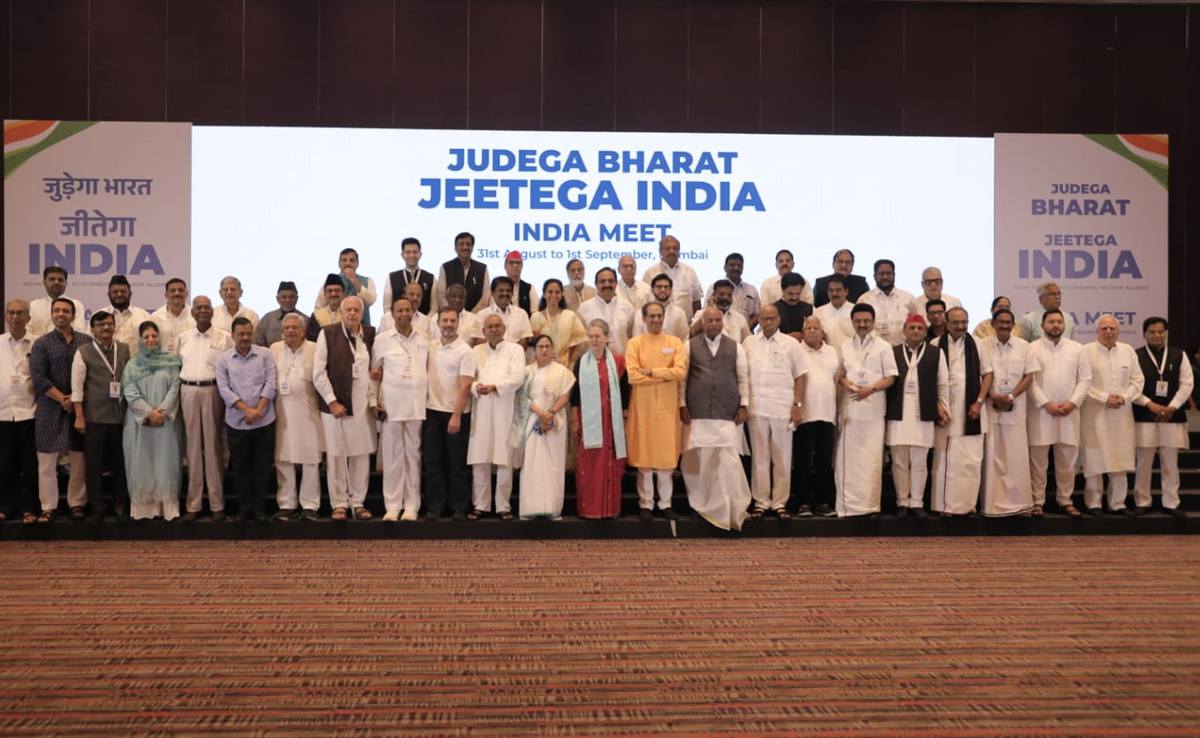
In recent months, there has been a growing perception that the challengers to the Bharatiya Janata Party-led National Democratic Alliance (NDA) have struggled to unite effectively. The Indian National Development Inclusive Alliance, or the INDIA bloc, initially proposed as a grand coalition to oppose the government under Prime Minister Narendra Modi, seemed to be fragmenting. This was largely due to its key initiator, Bihar Chief Minister Nitish Kumar, defecting to the opposition camp.
Since then, there have been widespread disagreements among parties opposed to the BJP regarding seat-sharing arrangements, with many pointing fingers at the Congress for the discord. However, the focus has shifted from divergences to convergences, indicating a more unified stance among the opposition. Rifts such as the Aam Aadmi Party-Congress conflict in Punjab, the Congress-All India Trinamool Congress rivalry in West Bengal, and the Congress-led United Democratic Front vs. the Communist Party of India-Marxist (CPI-M)-led Left Democratic Front in Kerala have highlighted the challenges within the opposition.
BJP's Strong Narrative
On the contrary, the BJP, with its early and vigorous Abki Baar 400 Paar campaign slogan, has set a narrative that is gaining traction. Recognising its strength, the party, led by PM Modi, is determined to maintain its dominant position in national politics. Employing an aggressive approach akin to being on the front foot in cricket, the party and its leadership are in an attack mode. With a robust election machinery, substantial financial resources, a dedicated cadre base, and the silent support of numerous Rashtriya Swayamsevak Sangh (RSS) workers, the BJP's momentum appears unshakeable.
As the first phase of voting approaches on Friday, April 19, a clear picture emerges of a nearly direct contest between the two major political formations. In the 102 Lok Sabha constituencies across 21 states and Union Territories where voting will take place, the contest in nearly 90 seats will be between NDA constituents and INDIA partners.
While other candidates from various national/state parties, smaller factions, and independent contenders are also in the fray, a large part of the electoral battleground will be defined by the clash between these two broad coalitions.
Taking stock of the emerging landscape of the first phase, key battleground states such as Tamil Nadu, Rajasthan, Uttar Pradesh, Madhya Pradesh, Assam, Maharashtra, Uttarakhand, Bihar, Manipur, as well as single constituencies in Arunachal Pradesh, Jammu and Kashmir, Meghalaya, Mizoram, and Puducherry, account for over 90 seats. In these constituencies, candidates are predominantly aligned with either of the two competing alliances.
A Few Divergences
While the broader picture suggests a united approach, there are divergences in a few constituencies. This is particularly evident in West Bengal, where the All India Trinamool Congress (TMC) faces challenges from INDIA in three out of 42 constituencies. In these areas, which include Jalpaiguri [CPI (M)], Alipurduar (Revolutionary Social Party) and Cooch Behar (All India Forward Bloc), INDIA partners will be contesting the polls.
A similar situation arises in Meghalaya's Tura seat, where the National People's Party will confront the Congress and the Trinamool. In the lone Andaman and Nicobar seat, it's Congress vs. BJP, with a CPI(M) candidate also in the mix. In another island territory, Lakshadweep, the Congress faces a challenge from Sharad Pawar's Nationalist Congress Party (NCP).
Congress Becomes More Accommodating
Having faced criticism for delaying seat-sharing talks and squandering its first-mover advantage, the Congress has ultimately yielded ground to others. As the election schedule for the seven-phase polls progresses, the Congress aims to limit its candidates to around 330, compared to the over 400 seats contested in 2004 when it formed the United Progressive Alliance (UPA) coalition.
The party acknowledges that it has reduced its numbers to accommodate allies in states like Maharashtra, Uttar Pradesh, and West Bengal, a decision partly influenced by the setbacks in assembly elections in three Hindi heartland states last November. The revised strategy is clearly geared towards mounting an effective challenge to the BJP-led alliance and avoiding the fragmentation of votes.
Considering the inherent political differences among some INDIA partners and their competing interests, it could be argued that mere cooperation among parties may not necessarily lead to the consolidation of opposition votes. However, it may be worth recalling a quip by former Congress Minister Priyaranjan Dasmunsi in 2004. When asked to explain the dichotomy of the Left supporting the Congress, he had likened it to a situation in football, where players from West Bengal football clubs compete against each other in Maidan but unite when wearing the India jersey. Politics, as they say, is the art of the possible.
(K.V. Prasad is a senior Delhi-based journalist)
Disclaimer: These are the personal opinions of the author
from NDTV News- Topstories https://ift.tt/tRguXrH


No comments:
Post a Comment